by Todd Rutherford
Located in Littleton, Colorado, The Gardens at Columbine is a memory care/assisted living facility on which Outdoor Design Group provided landscape design services. This site was an expansion of an existing assisted living facility onto adjacent property. This new building provides a space for adding memory care services to the facility’s roster of other existing services for senior citizens.
As the new building was being planned for this recently acquired property, we designed the outdoor spaces, walkways and landscaped gardens to surround this new structure. Because the site was not terribly large, and the proposed building sizable in scope, this provided several challenges. From how to fit parking spaces into a small space to designing safe and sound emergency exit pathways, this project was a challenging but satisfying endeavor.
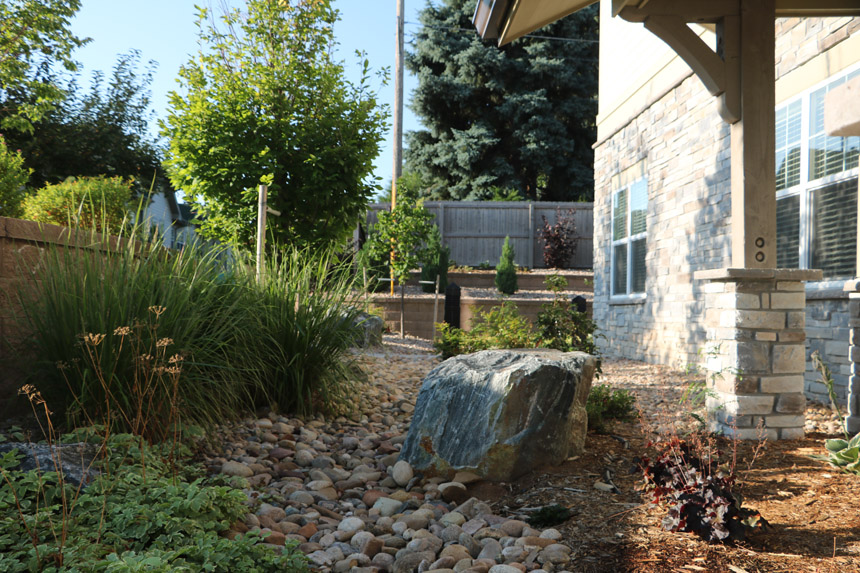
One of the first challenges we had to face was how to provide a working landscape at the east entrance to the building. This entrance is near the other existing building, and is the preferred access point for employees traveling between buildings. The difficulty here was adding an entrance walkway that would transition from a higher elevation parking lot then drop down to a doorway that sits slightly below grade relative to the parking lot. Retaining walls were necessary in this area so we added built in benches at the walls to provide useful amenities along this path. Step lights in the walls provide a soft illumination for this well used pathway.
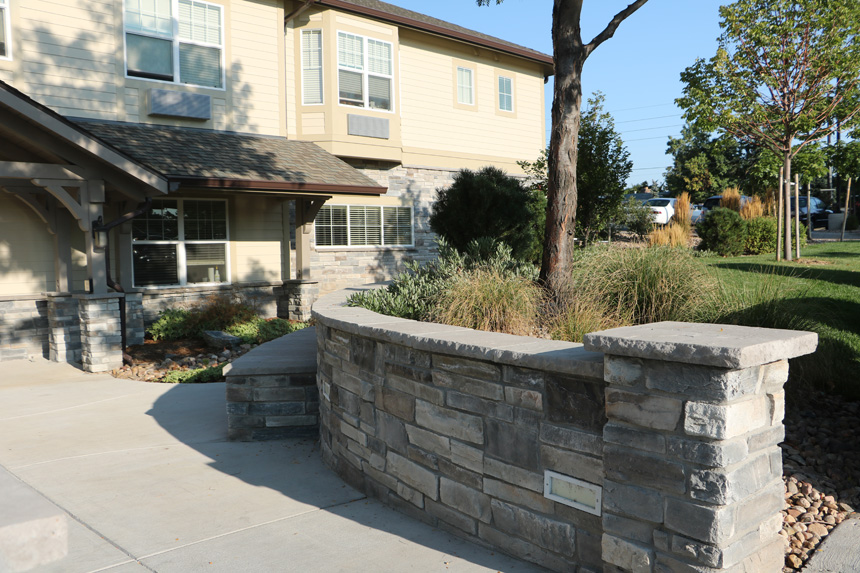
Prior to construction, the original site was filled with trees, as it had been a large lot with one single family home on it. While some of the existing trees could not be saved due to the scope of the proposed building, we worked with the city and the owner to save as many trees as we could. For example we spent a significant time working and re-working the landscape plan with the civil engineer on the project to reconfigure the entrance drive and parking areas to save several existing trees on the north and east sides of the property.
The namesake gardens are located in the internal courtyard of the project. These outdoor spaces give residents of the facility a charming scene that invites them to go outside and get some fresh air amid the trees, shrubs and raised bed gardens.
Stepping out of the building and into the courtyard, the first of the raised planting beds one encounters is a large circle comprised of a poured-in-place concrete seat wall that is chock full of colorful perennials, wispy ornamental grasses, low growing shrubs and scraggy boulders.
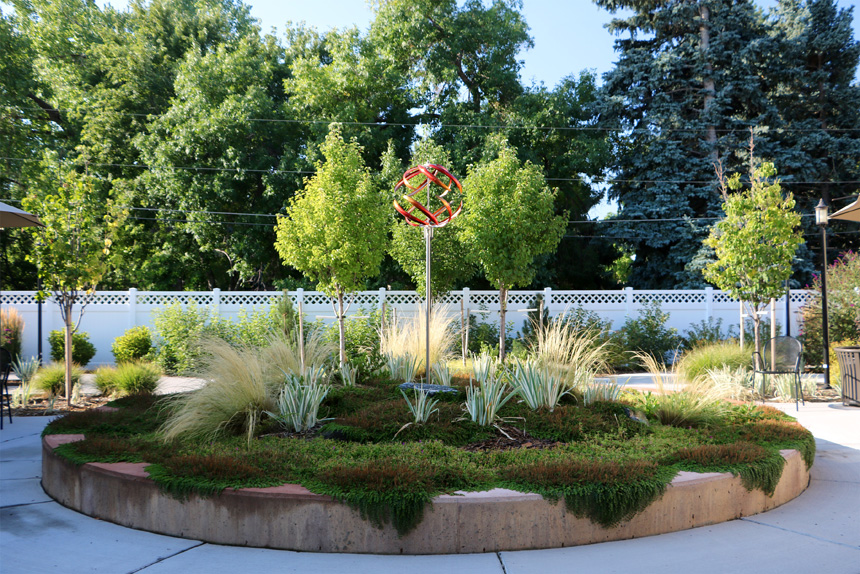
As you step further into the courtyard, you encounter wooden raised bed gardens where residents of the facility can indulge their gardening bug and get their hands dirty in the soil. These two beds are situated on opposite sides of the courtyard, connected by a concrete walk where the residents can circumnavigate to achieve fresh air and exercise, ensconced in the protective calm of these hidden gardens.
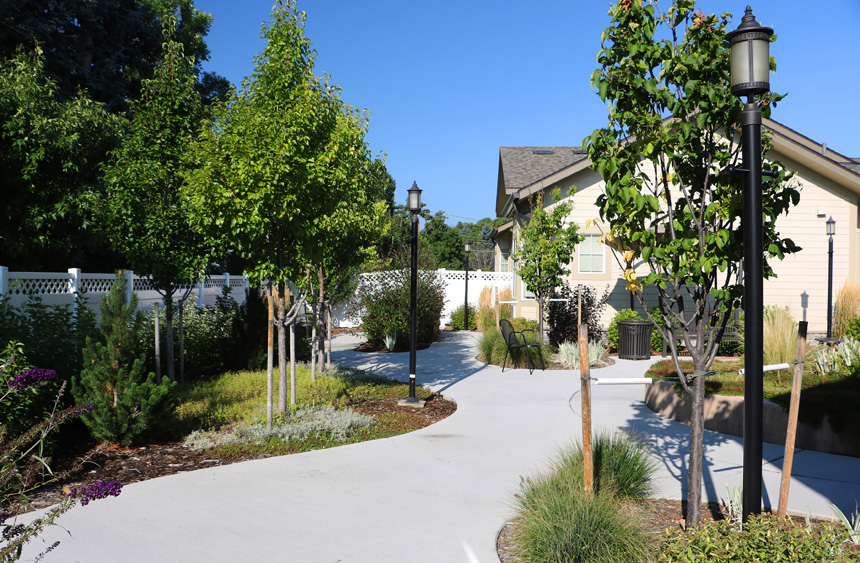
This is the official blog of Outdoor Design Group, Colorado Landscape Architects. For more information about our business and our services, click here.
Related Posts:
by Todd Rutherford
A visit to the Denver Botanic Gardens has revealed that the first signs of spring are making their presence known. As we have been experiencing a recent warm spell here in the Denver area, I decided to check out the Gardens to see what might be blooming. Sure enough, there were many bulbs and some shrubs that were taking advantage of the balmy weather to burst forth in bloom.
Below are just a small sampling of what’s flowering now at the Gardens:
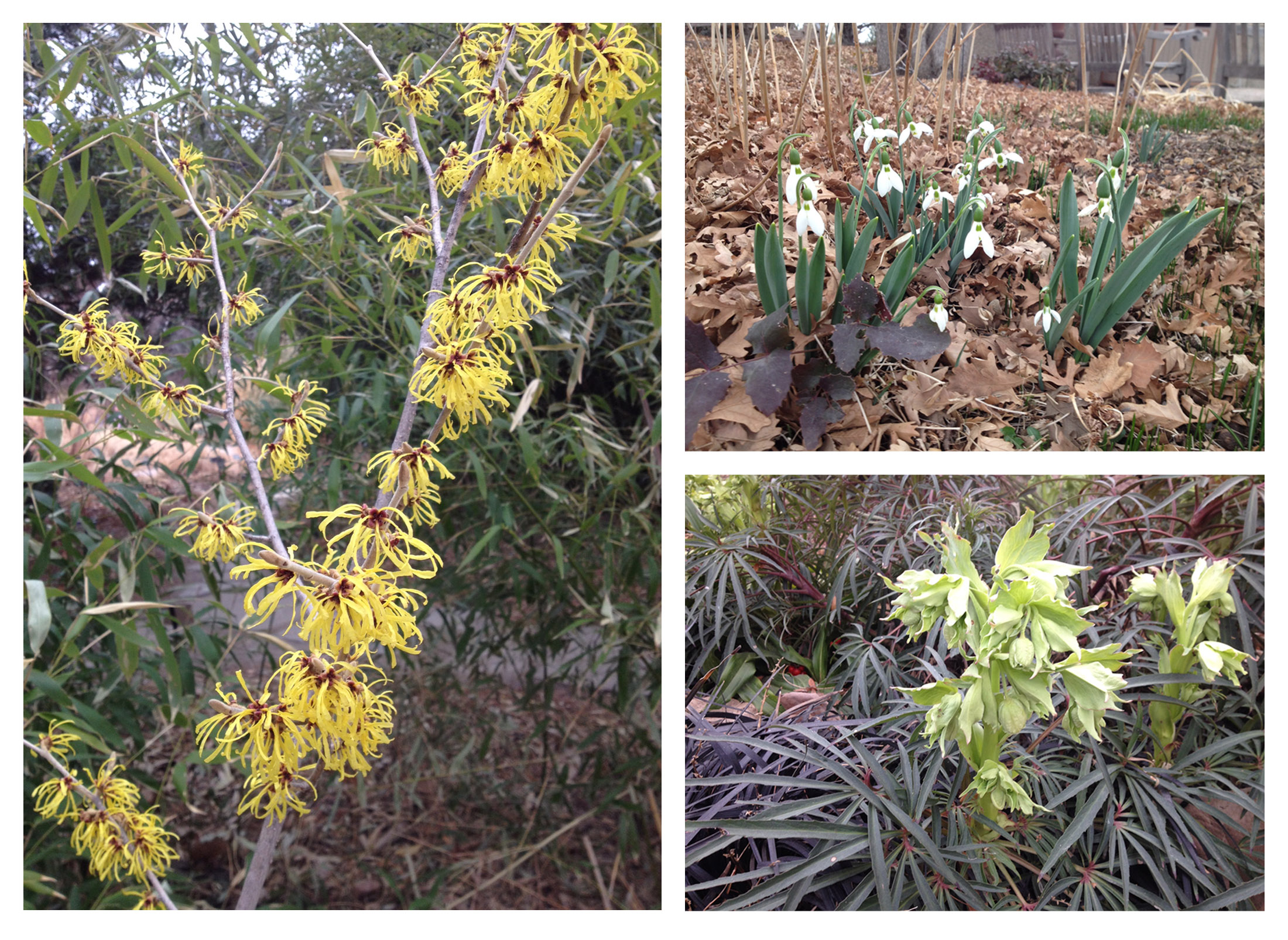
Clockwise from left: Witchhazel; Snowdrops; Hellebores
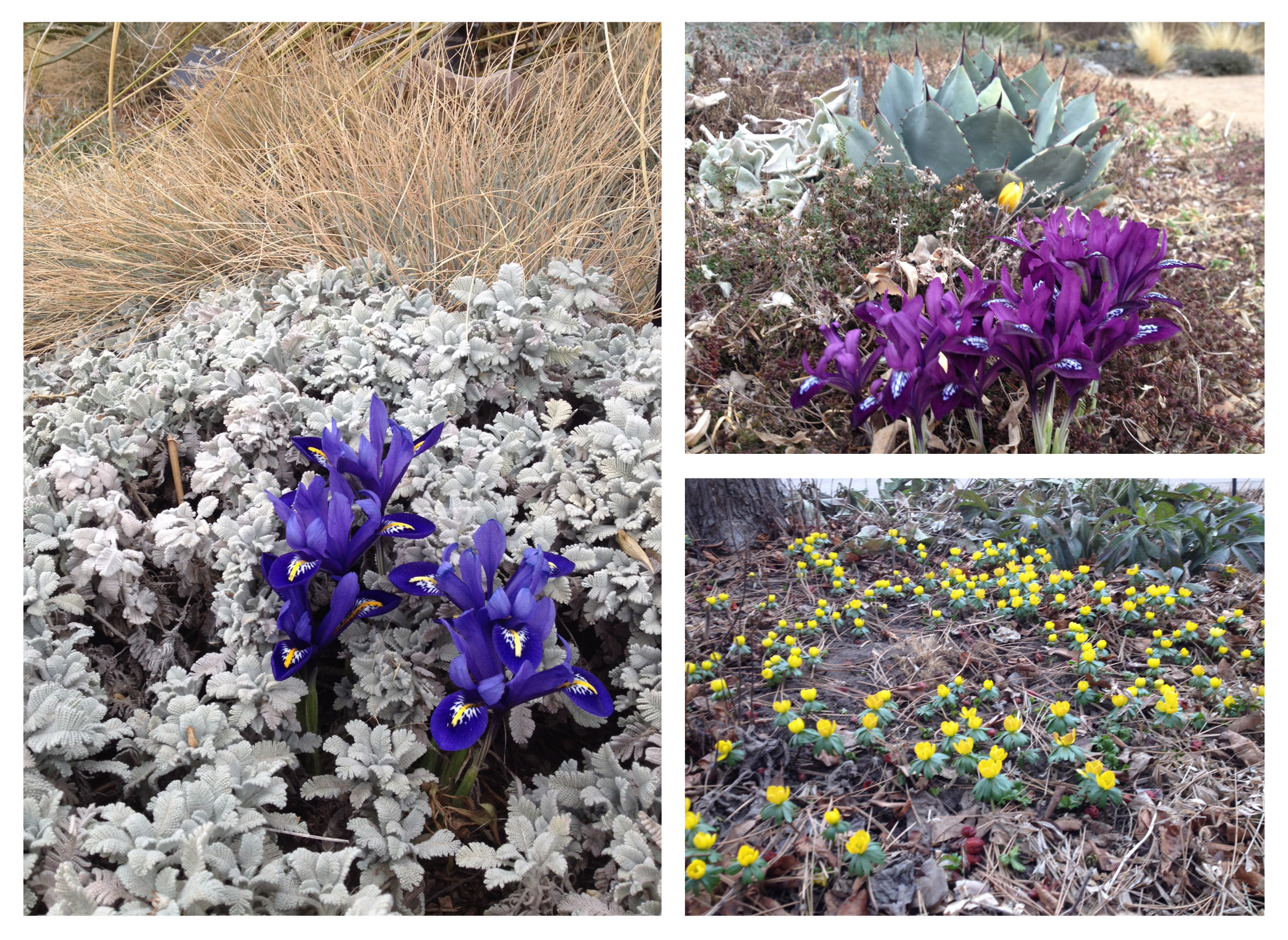
Clockwise from left: Dwarf Iris in Partridge Feather; Dwarf Iris with Crocus and Agave; Winter Aconite
This is the official blog of Outdoor Design Group, Colorado Landscape Architects. For more information about our business and our services, click here.
Related Posts:
by Todd Rutherford
When it comes to trees in designed landscapes in Colorado, landscape architects and designers don’t have very many species to choose from. With that being said, it might seem heretical to propose that the list of trees to pick from be restricted even further. Specifically, I advocate that large evergreen trees NOT be planted in dense urban areas that experience cold winters, unless they are sufficiently distant from walks and streets located north of such evergreens.
The shadows that large evergreen trees cast can help foster ice patches on walks and roads, compromising the safety and welfare of those who utilize these areas to travel about our towns and cities. If we are going to encourage biking and walking to ease automobile congestion and alleviate environmental impacts, having the safest travel routes we can achieve is a noble goal.
It may be surprising to those who don’t work in the landscape, architecture or planning fields, but many municipalities require that a certain number or percentage of the trees on a landscape plan be evergreen trees. Sometimes these arbitrary requirements restrict designers and architects to squeeze these large winter-shading ice patch-makers into a site where it might be best to avoid them. However, I should mention that some municipalities that I’ve worked with do acknowledge the problem of winter shading from evergreen trees, and they do have instructions in their landscape codes to locate proposed large evergreens away from walks and roads that would be shaded by those evergreens.
I first became aware of the problem of evergreen shadow ice patches as an urban bike commuter in the Denver area. It is frustrating at best, and rather dangerous at worst to encounter a patch of ice on a street during winter time. I have found that often times when biking in the Denver area in winter, the majority of streets can be clear of ice, except for those areas shaded by evergreens that are located just south of walks and streets. But it is not just bikers that would benefit from restricting evergreen trees in urban areas. Walkers and runners would also have an improved level of travel safety due to less icing of their pathways.
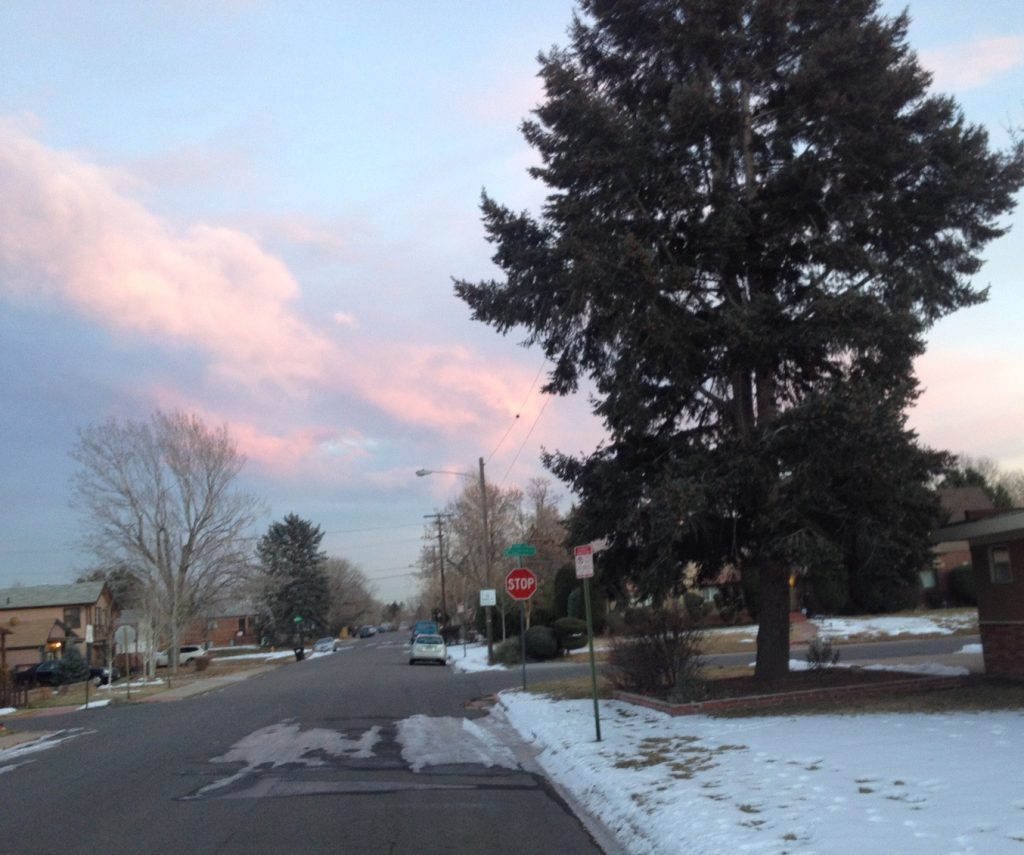
An ice patch on a Denver street, from the shadow of a large evergreen tree.
Because the foliage canopy of pine, spruce and fir trees does not drop during winter, melting of snow and ice via solar gain is limited. Deciduous trees, which drop their leaves and allow more sunlight to reach walks and streets, are a better choice in place of evergreens. I acknowledge that evergreen trees are often used for landscape screening. But I question whether this screening is worth it when considering their impact to roads and walks during winter.
Another impact from lost solar gain due to evergreen tree shading is on homes and other buildings. A building that sits in the winter shadow of a large evergreen tree will miss out on solar warmth during a sunny Colorado winter day.
I do realize that in dense urban areas, it’s not just trees that can shade our streets and sidewalks. People need shelter and workspaces, and some of those structures could end up shading streets and cause ice patches. But residents don’t need evergreen trees on their urban lot. I advocate for trees to create shade in summer, visual interest in all seasons, and wildlife habitat. But the choice of tree in tight urban quarters needs to be considered carefully.
Despite the tongue in cheek title of this blog post, evergreen trees can be a wonderful addition to the landscape. I am not actually asking for evergreen trees to be banned from urban areas of Colorado. However it does seem best that in dense urban areas that experience cold winter weather, we should consider restricting evergreen trees to parks and large lots, away from streets and sidewalks where their winter shade will not cause icy travel dangers for walkers, bikers and even cars.
This is the official blog of Outdoor Design Group, Colorado Landscape Architects. For more information about our business and our services, click here.
Related Posts:







